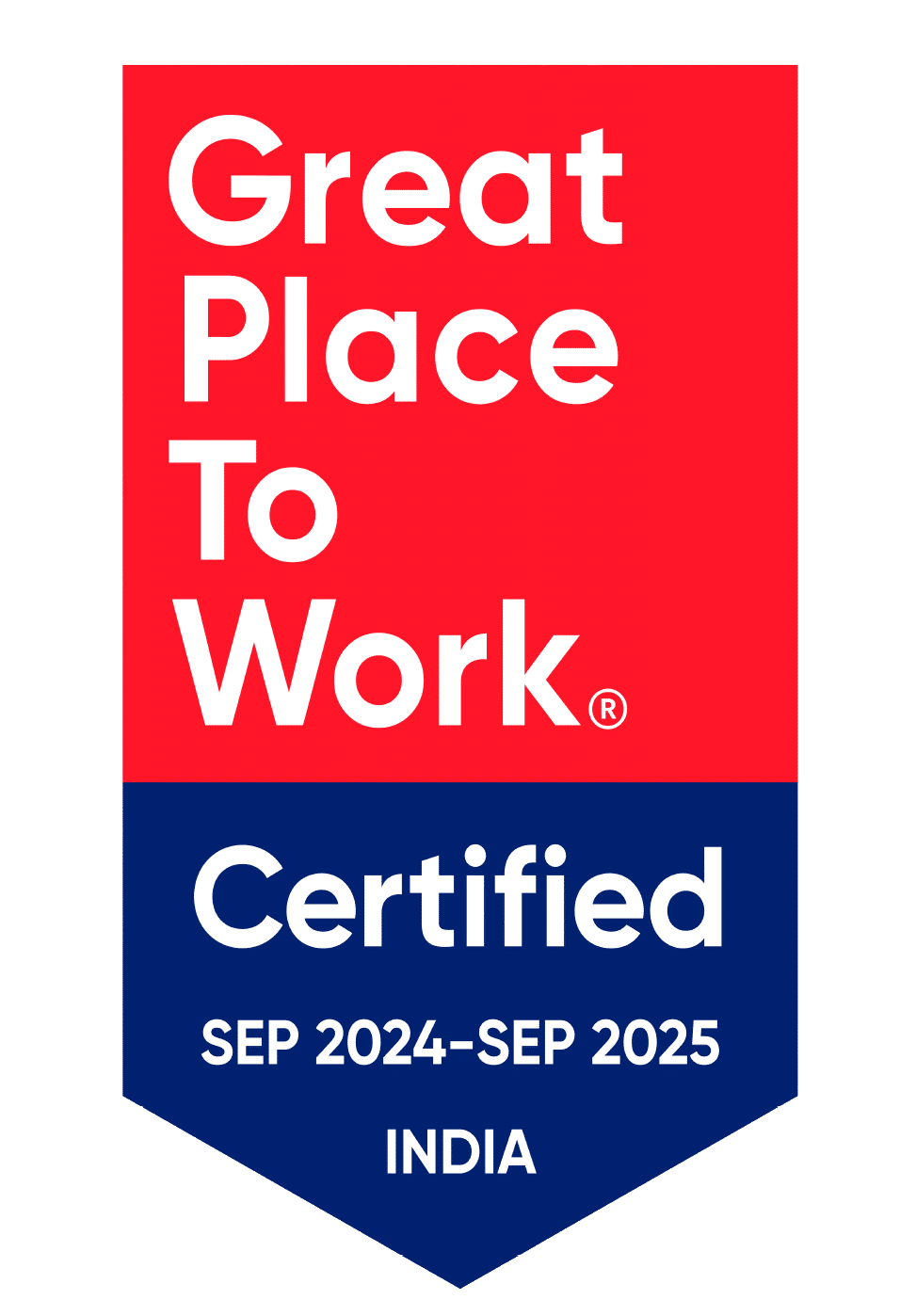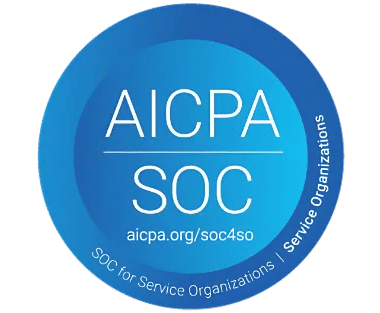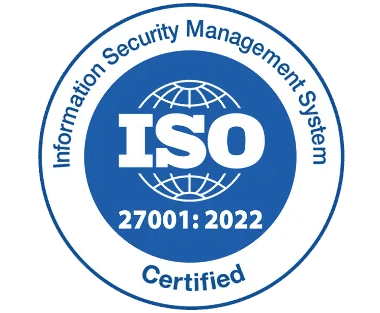CLM Solution Explained: Why It Matters, Features & Benefits
_XAuwsGglTj.png)
Great businesses do not just close deals they manage every contract with precision and purpose. Yet, many companies still rely on outdated, manual systems to manage them.
Maintaining vendor relationships is the foundation for long-term business success. By implementing CLM solution, businesses are reporting faster contract approvals, reduced compliance errors, and significant savings in legal and administrative costs.
A study conducted by World Commerce & Contracting (WCC) highlights that contracts play a crucial role in today’s business landscape, especially in governing B2B revenue.
It is more than just a tool for keeping track of contracts; it’s a strategic advantage that drives efficiency, protects your business, and unlocks revenue.
Legal teams frequently grapple with the question: “Which contract management solution aligns with our unique requirements?” If that’s your query, rest assured we’ve
already curated the most suitable tools designed to meet your operational and compliance needs with precision.
In this blog post, we will explore how CLM solution can help for your business.
What is a CLM Solution?
A CLM solution is your strategic partner in managing contracts with clarity and control. It streamlines every phase of a agreement lifecycle right from the first draft to final executing of contracts and beyond. Whether it’s aligning stakeholders, standardizing language, or tracking obligations post-signature, a proper solution ensures each step is handled with precision.
But it s not just about organizing documents it is about transforming how your organization handles commitments. The system brings automation into play, removing the friction from approvals, renewals, and compliance checks. It centralizes contract data into a single, accessible platform, so teams no longer waste time searching, chasing, or second-guessing.
By replacing manual processes with intelligent workflows, it helps businesses stay ahead of risks, reduce unnecessary costs, and make more informed decisions. It gives legal, procurement, and operations teams the visibility they need to act with confidence.
In essence, a the solution does not just manage contracts it empowers your business to manage relationships, responsibilities, and revenue with strategic foresight.
Importance Of Implementing CLM Solution In Modern Business
We have understood what a CLM solution is, it is equally important to explore how implementing it can positively propel business operations, enhance decision-making, and drive long-term growth.
1) Automates the Entire Agreement Lifecycle
Manually handling contracts consumes up valuable hours. From drafting to approvals to collecting signatures, each step takes time—and introduces the risk of human error or delays.
A contract automation simplifies these steps. You can route contracts through customizable workflows, notify stakeholders automatically, and collect digital signatures without chasing anyone.
The feature make sure that nothing gets stuck in someone’s inbox. It standardizes how your business handles every agreement, creating a more predictable and efficient process.
The result? Contracts move faster, teams stay focused, and your business keeps growing without the paperwork getting in the way.
2) Extracts Clauses with Precision
One of the most time-consuming parts of creating contracts is finding the right clauses especially when each deal is slightly different. With a proper solution, that problem disappears.
The system pulls relevant clauses from a central clause storage. These are clauses that have already been reviewed and approved by your legal team. No more reinventing the wheel, and no more inconsistent language that could put your company at risk.
By using clause libraries, contracts are drafted faster, reviewed quicker, and executed with confidence. Consistency improves. Risk goes down. And your legal team finally has time to focus on strategic matters, rather than proofreading every document.
3) Offers Standardized, Professional Templates
A contract should be clear, well-formatted, and aligned with your brand. CLM solution offer standardized templates for different contract types NDAs, vendor agreements, service contracts, and more.
These templates are easy for teams to use and ensure that every agreement follows the same structure, tone, and branding. This reduces the review time significantly and improves how external partners perceive your business.
4) Reduces Review Time and Accelerates Deal Closures
A common challenge in business deals is the legal review process. When contracts are inconsistent or unclear, they require line-by-line examination and that slows everything down.
The system reduce this friction by providing pre-approved templates, structured workflows, and version control. Legal department do not need to start from scratch each time. Sales teams don’t have to wait weeks for a green light.
The result is faster turnaround times, quicker approvals, and more closed deals. Time is money and with the powerful solution, you save plenty of both.
5) Stores Every Contract in One Secure,
One of the biggest risks in traditional contract management is disorganization. Documents live in emails, folders, local drives, and sometimes even paper files. Searching for a specific clause or agreement becomes a painful process.
It centralizes every contract into one secure digital repository. You can search by client name, contract type, date, or keyword. Need to find all agreements expiring next quarter? It takes seconds not hours.
Centralized storage also makes audits and compliance checks much easier. Everything is in one place, tracked, versioned, and backed up. You are no longer relying on memory or messy folders you have got a single source of truth.
6) Ensures Security and Compliance
Contracts often contain sensitive financial details, legal obligations, and personal information. A reliable system like CLM 365, which is Microsoft-certified, ensures all your data is protected with enterprise-grade security features—such as encryption, role-based access, audit trails, and compliance with data privacy laws.
It also helps your company stay compliant with legal standards and industry regulations. With automated alerts and reporting, you are informed of upcoming obligations and deadlines so nothing gets missed, and no penalties are incurred.
Security and compliance aren’t just legal requirements they are foundations of trust.
7) Provides Real-Time Visibility Across Teams
Without visibility, contract management becomes reactive. You’re only aware of issues when they become urgent.
A CLM solution gives you real-time visibility into every contract’s status. Who’s reviewed it, who’s signed, what is pending, and when it’s due for renewal. Dashboards and analytics give you full control so you can manage contracts proactively instead of reactively.
This transparency strengthens collaboration across departments
from legal and finance to sales and operations. Everyone knows where things stand and what needs to happen next.
8) Supports Better Decision-Making Through Data
The system do not just store documents they surface insights. By analysing contract data, you can identify trends in deal size, negotiation timelines, risk clauses, vendor performance, and more.
This data can inform your business strategy, optimize your negotiation playbooks, and guide internal policy decisions. The more contracts you manage, the more insights you gain.
Smart businesses don’t just manage contracts they learn from them.
9) Improves Negotiation Efficiency
Negotiating terms can be time-consuming, especially when starting from scratch. A effectiv solution helps you arrive at fair, compliant, and strategic terms faster by using pre-approved language and structured clause options.
You can also track negotiation patterns over time what clauses are often contested, which ones cause delays, and where there’s room for flexibility. This reduces back-and-forth, strengthens your negotiating position, and leads to quicker, more favourable outcomes.
To know more about how negotiating works, consider reading the below article.
Recommended Read: Contract Negotiation Workflow
10) Makes Contract Drafting Easy for Business Users
Using CLM 365 users can draft their contracts using outlook at ease, this powerful feature enables sales, HR, and procurement teams to draft contracts easily using guided templates and smart forms. No legal jargon required.
This self-service approach reduces dependency on legal teams, empowers departments to move faster, and ensures everyone follows the same standard processes.
Business teams stay agile. Legal teams stay focused. And the whole company moves forward with confidence.
7 Challenges Legal Teams Face in Contract Management
Here are some challenges that legal teams face while managing agreements.
1) Respecting Regulatory Expectations
Navigating today’s legal landscape requires more than just awareness it calls for consistent alignment with evolving rules and industry standards. A thoughtful approach to documentation and processes helps ensure that your organization stays compliant without unnecessary stress.
Gentle reminders, structured workflows, and organized information allow your team to meet requirements with confidence and care, building trust with clients and regulators alike.
2) Maintaining Clear Version History
When multiple people collaborate on a document, it is easy for changes to become confusing. Clear version control helps your team stay aligned and prevents mistakes.
Being able to see who made changes, when they were made, and what was updated adds clarity and accountability. It also supports better collaboration and ensures that everyone is working from the most accurate version without the worry of lost edits or overlapping efforts.
3) Tracking Important Dates and Duties
Every agreement comes with its own set of timelines renewals, reviews, deliverables, and more. Forgetting even one can create avoidable challenges. A well-structured system gently reminds you of what is coming next, ensuring nothing is missed. This kind of timely support allows your team to act with confidence, avoid last-minute rushes, and honor commitments with ease.
4) Approaching Disagreements with Clarity
Disagreements happen in business it is natural. What matters is how well-prepared you are to address them.
Having a clear record of decisions, changes, and communication allows teams to revisit details calmly and reach resolutions without conflict. Organized documentation becomes a quiet ally in turning tension into teamwork.
5) Keeping Information Private and Protected
Business documents often contain sensitive details that deserve careful handling. With appropriate security measures in place such as permission controls and activity logs you can rest assured that only the right people have access.
This respectful approach to privacy reflects your company’s commitment to safeguarding client and company information.
6) Simplifying the Review Process
Reviews are an essential step in moving forward but they should feel like a burden. When everyone knows what’s expected, where to look, and how to contribute, the review process becomes smooth and efficient.
Fewer delays, clearer feedback, and a better pace of progress make all the difference in bringing work to completion respectfully and on time.
7) Difficulty in Gaining Full Visibility
When contracts and key documents are scattered across departments or stored in silos, gaining a clear view of your obligations and progress becomes difficult. Without proper visibility, it’s harder to make informed decisions, catch upcoming deadlines, or assess the overall health of your agreements.
A thoughtfully integrated system offers clarity allowing every stakeholder to stay aligned without needing constant follow-ups or status checks.
With greater transparency, teams can work more confidently, knowing they have the right information at the right time.
Best Practices For Managing Contracts
Manging contracts effectively make sure smooth operations, minimizes risks, and strengthens business relationships. Here are best practices to streamline your contract lifecycle and drive better outcomes,
1) 1. Centralize Contract Storage for Greater Visibility and Control
Decentralized agreement storage often leads to version mismatches, misplaced documents, and avoidable compliance gaps. Establishing a centralized, digital contract repository ensures all stakeholders have real-time access to the latest versions of contracts, along with associated metadata, obligations, and approval workflows.
Centralized systems not only streamline retrieval and audit readiness but also enable seamless collaboration across legal, finance, procurement, and sales teams.
2) Standardize Templates
Contract inconsistencies are a major source of legal exposure and operational delays. By using standardized templates and maintaining an up-to-date clause library, organizations can mitigate risk, improve drafting efficiency, and accelerate negotiation timelines.
Using pre-approved language ensures legal alignment across departments, reduces reliance on external counsel, and promotes contract alignment.
3) Assign Clear Ownership at Each Stage of the Lifecycle
Unclear terms in contract ownership leads to challenges, missed deadlines, and accountability gaps. Defining clear roles and responsibilities from initiation and negotiation to execution and renewal is essential for operational clarity and process efficiency.
By mapping ownership to each contract phase and stakeholder, organizations create accountability frameworks that ensure contracts move forward without unnecessary delays. Well-defined workflows also empower teams to escalate issues and enforce timelines, improving both internal alignment and external responsiveness.
4) Automate Key Dates
Missed renewals, overlooked obligations, or delayed deliverables can result in financial penalties, damaged relationships, and reputational loss. Automating reminders for key dates, including contract expirations, renewal windows, payment milestones, and compliance checkpoints, enables proactive risk management.
The system is equipped with smart alerts, calendar integrations, and performance tracking provide the oversight needed to prevent lapses and renegotiate terms on favourable grounds. Automation shifts the approach from reactive to strategic, ensuring contracts are actively monitored not forgotten in a filing system.
5) Conduct Periodic Contract Reviews
Contracts must remain aligned with evolving business objectives, regulatory frameworks, and market dynamics. Regular contract audits help identify underperforming agreements, hidden liabilities, and renegotiation opportunities.
Reviewing key contract metrics such as supplier performance, service-level adherence, and financial impact enables data-driven decisions. These insights help organizations optimize costs, mitigate legal exposure, and drive continuous improvement in vendor and partner relationships.
Reliable Features In CLM Solution
Managing contracts doesn’t have to be complicated or overwhelming. The right platform can bring clarity, speed, and structure to every stage empowering your team to work smarter, not harder. Here is how today’s most advanced tools are helping modern organizations simplify their contract journey.
1) AI-Powered Capabilities
Let intelligent technology do the work. An advanced solution now uses AI to summarize complex clauses, suggest alternative language when needed, and highlight obligations with impressive accuracy.
This not only saves time but also enhances understanding across departments, making it easier to keep everyone aligned without digging through pages of legal text.
2) A Clear Record of Every Move
While monitoring agreements, clarity is power. That is why the activity log plays a silent but crucial role. It tracks every change, comment, and signature ensuring that nothing gets overlooked or lost in email chains.
Whether you are answering a compliance question or simply reviewing a colleague’s input, this log offers a reliable trail of who did what, and when. It builds accountability without interrupting the flow of work.
3) Reports That Reveal Insights
Every contract tells a story. And behind that story are numbers, timelines, and performance data that deserve attention. The ability to craft detailed reports allows leaders to identify patterns, spot issues, and plan better.
With a modern reporting tool, you do not need to be a data analyst to understand how contracts are moving through your business. It is clear, visual, and tailored to help you make decisions with confidence.
4) Approval Processes That Keep Projects on Track
Multi-level approvals ensure contracts are reviewed by the right stakeholders at the right stage. This structured approach respects hierarchy while avoiding challenges. It also protects the integrity of the agreement by ensuring nothing is finalized without proper oversight. Your team can move faster, with the confidence that every necessary checkpoint is covered.
5) Amendments That Stay Organized
Contracts evolve just like business relationships. This system allows you to make amendments without disrupting the original flow. Each change is documented, easy to locate, and properly linked to the original contract, so you always have the full context. It creates a living document that grows with your business, all while keeping things clear and organized.
Looking to learn the difference between addendum vs amendment. Consider reading below article
Recommended Article: Contract Addendum
6) Dashboard
The dashboard brings clarity to complexity. It presents contract status, pending tasks, upcoming renewals, and performance metrics all in one elegant view.
Whether you are managing dozens or thousands of contracts, the dashboard provides instant access to the information that matters. It simplifies your day and helps you focus on decisions rather than data gathering.
7) Version Control
Collaboration often involves multiple revisions and inputs. With structured version control, you will always know which document is current, and you can easily refer to earlier versions when needed.
This feature ensures accuracy across teams and fosters confidence in every step of the process. It’s a seamless way to collaborate while preserving clarity and continuity.
8) E-Signatures
Modern business demands flexibility. E-signature capabilities allow your team and your clients to review and sign documents from anywhere, at any time.
It removes the need for printing, scanning, or mailing reducing turnaround times and keeping business moving at the pace of opportunity. It’s secure, convenient, and designed for today’s fast-paced world.
9) Responsive Experience Across All Devices
Whether in the office or on the move, your team can access and manage contracts with the same ease.
The system’s mobile responsiveness ensures that screens adjust beautifully on any device desktop, tablet, or phone. This means key stakeholders can stay connected to what matters most, no matter where work happens.
10) Review and Recollect with Precision
Sometimes the best answer lies in a previous agreement. With advanced search and retrieval features, users can quickly locate past contracts, reference specific terms, and reuse effective language.
It is a powerful way to reduce repetition, uphold consistency, and build on what’s already proven to work well.
How to Choose the Right CLM Solution for Your Business
As businesses grow, so does the complexity of managing contracts. You may start to notice that routine tasks take longer than they should. You might spend too much time gathering information or following up on approvals. Documents may get passed back and forth, with no easy way to track changes or status. These are common signs that your current approach could be improved.
At this stage, many teams start exploring ways to bring more structure, clarity, and control to their contract processes.
We recommend approaching the selection process with a clear plan. Look at how your team works today, what improvements would make the biggest difference, and which tools are easy to adopt across departments. Test the user experience, review support options, and ask how easily the solution integrates with tools you already use.
Ultimately, the right CLM solution will feel like a natural extension of how your business operates helping you stay organized, responsive, and ready for every opportunity that comes your way.
1) Know What You Really Need
Before looking at any product, it’s important to understand what you expect from a CLM solution. Think about your current process what feels slow, repetitive, or disorganized? Maybe contracts take too long to approve, or you’re not sure where the latest version is saved.
These are clues that help define your needs. By writing down your must-haves and nice-to-haves, you can compare tools based on how well they support your daily work. When you know your problems clearly, the right solution becomes easier to find.
2) Bring the Right People to the Table
Contract management does not just involve the legal team it often includes departments like sales, procurement, HR, and even finance.
Each group interacts with contracts in its own way. When you bring these voices into the discussion early, you get a complete view of what your company truly needs.
Their feedback ensures the CLM solution you choose will be helpful across the organization and not just for one department.
3) Prioritize Simplicity and User-Friendliness
A powerful tool is only effective if your team can use it with ease. The best CLM solution will have a clean design, an intuitive layout, and helpful guidance so users don’t feel overwhelmed.
Look for features like drag-and-drop uploads, guided creation, or easy search tools. Simplicity encourages adoption and when your team is comfortable using the system, your results improve automatically.
4) Look for Scalability and Flexibility
Your business is not standing still it is growing, changing, and evolving. The solution you choose should be flexible enough to grow with you. Whether you are adding new users, managing more contracts, or expanding to new locations, the system should be able to support your future needs. It’s better to plan for growth now than to switch tools again later.
5) Check How It Works with Your Current Tools
A smart solution should not force you to change everything. Instead, it should connect well with the tools your team already uses. Whether that is your Outlook, MS Teams, SharePoint or Azure.
Make sure you are the solution integrates smoothly. This creates a more seamless workflow and saves time jumping between systems.
6) Ensure Good Support and Training Resources
No matter how user-friendly a solution is, you will still have questions and that’s okay. What matters is whether help is easy to reach. Look for providers who offer helpful training sessions, a knowledge base, and responsive support.
Some may even assign a customer success manager to guide your setup. The right support can make your transition smooth and help your team use the tool with confidence.
7) Take It for a Test Run
Finally, do not just rely on sales brochures or website promises. Book a live demo or a free trial version. Explore the features.
Upload a sample contract. Try out the workflows. Let a few team members experiment with it. This hands-on experience gives you real insight into whether the solution fits your working style and business flow.
Conclusion
Once you have carefully evaluated your options and selected the right CLM solution for your business, the next step is bringing that solution to life through a smooth and successful implementation.
Choosing a right solution is more than just a software upgrade it’s a strategic move to streamline the way your business handles contracts. That’s why it is essential to not only select a system that fits your current needs, but also one that is delivered with the right level of guidance, support, and care.
If you’re exploring your options or need a little direction, we’d love to help. Simply request a demo, and a friendly expert from the CLM 365 team will walk you through the platform and answer any questions you may have.
Let us build a simpler, smarter way to manage your contracts together.
Frequently Asked Questions
What is the role of a CLM solution?
It helps sales teams work more efficiently by streamlining the entire contract process. It removes unnecessary steps, so teams can focus on customers and closing deals. Everything is stored in one place, making it easy to access, update, and track contract progress.
Who uses a CLM solution?
Businesses in areas like healthcare, technology, finance, real estate, and manufacturing use it often. These industries manage detailed contracts and need a reliable system to keep everything organized, clear, and in line with internal rules.
What is the benefit of using it?
It helps create a consistent way of handling contracts. It reduces manual work, sets up smart workflows, allows for easy edits, and helps teams track progress and performance more easily.
How does the system work?
It works by guiding contracts through each step automatically sending them to the right people for approval. It also includes a feature that lets users sign documents electronically, so contracts can be completed quickly and securely.
How do I choose a reliable solution?
Start by understanding what your team needs. Look for a solution that is easy to use, helps you stay organized, and can grow with your business. Features like workflow setup, document storage, and reporting tools are all useful in making the right choice.










_svxLrd-8yH.png)

_2VYSFUTN5m.png)

_JiluXJRGNl.svg)

_2djTKNocf.png)





_Rapo0hRMBy.png)










